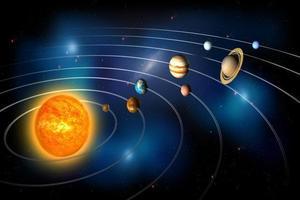12867962
UNIT 6.1 DISTANCE, SPEED AND ACCELERATION
Descripción
Resumen del Recurso
| Pregunta | Respuesta |
| A car travels 2 km in 80 seconds. How fast was it travelling in meters per second? (Remember 1 km = 1,000 m) | S = D ÷ T S = 2,000 ÷ 80 S = 25 m/s |
| A rocket travels at 1,500 m/s for 20 minutes. How far has it travelled in meters? (Remember 1 minute = 60 seconds) | T = 20 mins = 1,200 seconds D = S x T D = 1,500 x 1,200 D = 1,800,000 m |
| The moon is 384,000 km away. How long would it take to get there if you travelled at 100 km/h? | T = D ÷ S T = 384,000 ÷ 100 T = 3,840 hours or 160 days |
| Interpret this distance-time graph. | A to B: The object moves at a constant speed for 5 hours. B to C: The object stops moving for 3 hours. C to D: The object moves at a FASTER constant speed from 8 to 12 hours. D to E: The object stops for 2 hours. E to F: The object moves at constant speed, for 6 hours, back TOWARDS it's starting point. |
| Interpret this speed-time graph. | 0 to 20 s: The object accelerates at a constant rate. 20 to 35 s: The object travels at a CONSTANT SPEED. 35 to 55 s: The object DECELERATES at a constant rate. 55 to 60 s: The object has stopped moving. |
| A cyclist increases her speed from 2 m/s to 20 m/s in 6 seconds. What is her acceleration? | a = (v - u) ÷ t a = (20 - 2) ÷ 6 3 m/s2 |
| A car speeds up from 12 to 36 m/s with an acceleration of 2 m/s2. How much time did this take? | t = (v - u) ÷ a t = (36 - 12) ÷ 2 t = 12 s |
| Many road accidents happen because drivers reaction times are reduced. Suggest 2 things which can reduce a drivers reaction time. | Any 2 from: - Tiredness / lack of sleep - Poor visibility. - Too much alcohol - Too many drugs. |
| Stopping distance = Thinking distance + Braking distance A car driver sees a red traffic light ahead. She brakes and stops in a total distance of 52 metres. If her thinking distance was 15 metres, what was her braking distance? | Stopping distance = Thinking distance + Braking distance 52 = 15 + Braking distance Therefore 52 - 15 = Braking distance Braking distance = 37m |
| Stopping distance = Thinking distance + Braking distance A lorry travels 28 m when stopping from a speed of 4 m/s. If his braking distance was 18 m, what was the driver’s reaction time? | Stopping distance = Thinking distance + Braking distance 28 m = Thinking distance + 18 m Therefore Thinking distance = 28 - 18 Thinking distance - 10m Time = distance ÷ speed Time = 10 ÷ 4 Reaction time = 2.5 s |
¿Quieres crear tus propias Fichas gratiscon GoConqr? Más información.

